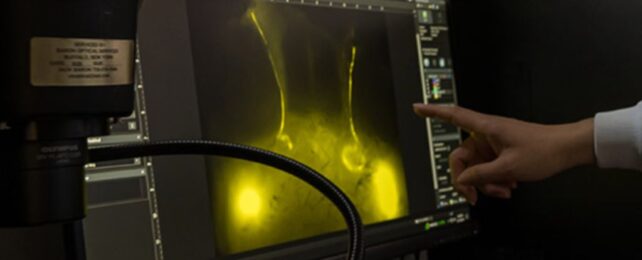A drug used to induce labor has the potential to protect the aging brain from a build-up of toxic waste implicated in neurodegenerative conditions like Alzheimer's disease.
In small doses, the hormone-mimicking compound prostaglandin F2α can induce smooth muscle contractions in the womb, encouraging delivery or helping reduce blood loss after birth.
In experiments on rats, conducted by researchers from the University of Rochester in the US, the same treatment triggered muscle contractions not in the uterine wall but in the walls of the neck's lymphatic vessels.
These vessels, scientists have shown, are composed of tiny pulsing 'pumps', which push 'dirty' fluid from the brain into the neck's lymph nodes for 'clean-up'.
The critical recycling system keeps the brain fit and healthy, but with age, it seems to suffer.
Researchers at the University of Rochester have shown that in older rats, the lymph vessels that drain cerebrospinal fluid (CSF) do not pump with the same frequency or strength. Their many valves, which keep fluid draining in the right direction, also struggle to open and close properly.
Compared to younger rats, researchers have found that older rats possess lymph vessels that drain CSF 63 percent slower.
But perhaps that isn't inevitable. Using prostaglandin F2α, researchers at Rochester have rescued the flow of the brain's 'sewage system' in older rats.

Scientists didn't even know the recycling program, called the glymphatic system, existed until a study on mice in 2012 revealed its presence in mammal brains.
Today, the glymphatic system is also known to exist in humans, and it has recently emerged as a key culprit in the development of inflammatory brain conditions, such as dementia, Alzheimer's, and Parkinson's disease.
CSF is a clear, colorless fluid that bathes the brain and spinal cord with a protective, nutrient-rich cocktail. As it flows through the central nervous system, however, it also picks up waste products that need to be regularly cleared out.
In humans, the CSF that bathes the brain is drained, cleaned, and refilled near constantly, turning over three to five times a day.
As we age, however, that process slows down, leaving us at greater risk of cognitive decline. High concentrations of toxic byproducts swimming in the CSF have been found to precede neurological diseases, and studies have linked slowed spinal fluid clearance to reduced sleep quality and cognitive function.
"This research shows that restoring cervical lymph vessel function can substantially rescue the slower removal of waste from the brain associated with age," explains mechanical engineer Douglas Kelley from the University of Rochester.
"Moreover, this was accomplished with a drug already being used clinically, offering a potential treatment strategy."
Whether or not the drug will work in humans remains to be seen, but in rats, it improved the flow of CSF in older individuals in a way that rivaled younger mice.
The drug was delivered topically to lymph vessels in the rodent neck, because it was these vessels that researchers found drained the majority of CSF.
As Kelley points out, these cervical lymph vessels are "conveniently located near the surface of the skin", which makes them favorable targets for future research.
"One can see how this approach, perhaps combined with other interventions, could be the basis for future therapies for these diseases," says Kelley.
But much still needs to be done before that future can be realized. It's just over a decade since the glymphatic system was first discovered, and scientists are still finding whole new networks of tiny channels through which CSF flows. The hidden waves that push these fluids along are also still coming to light.
Just recently, scientists discovered a whole new layer of brain anatomy, merely a few cells thick, that assists in the brain's glymphatic system.
This is a burgeoning area of neuroscience that we haven't heard the last of.
The study was published in Nature Aging.
